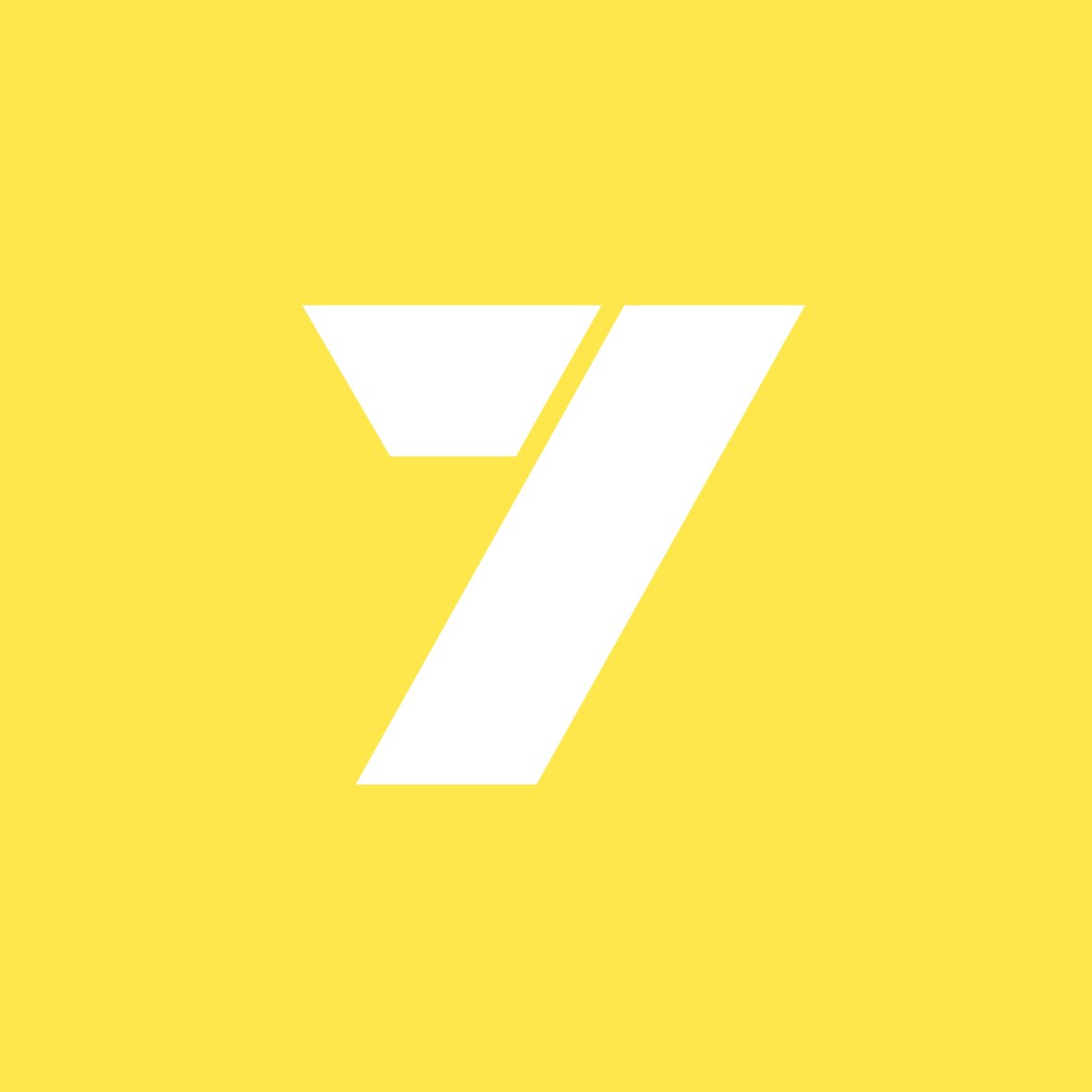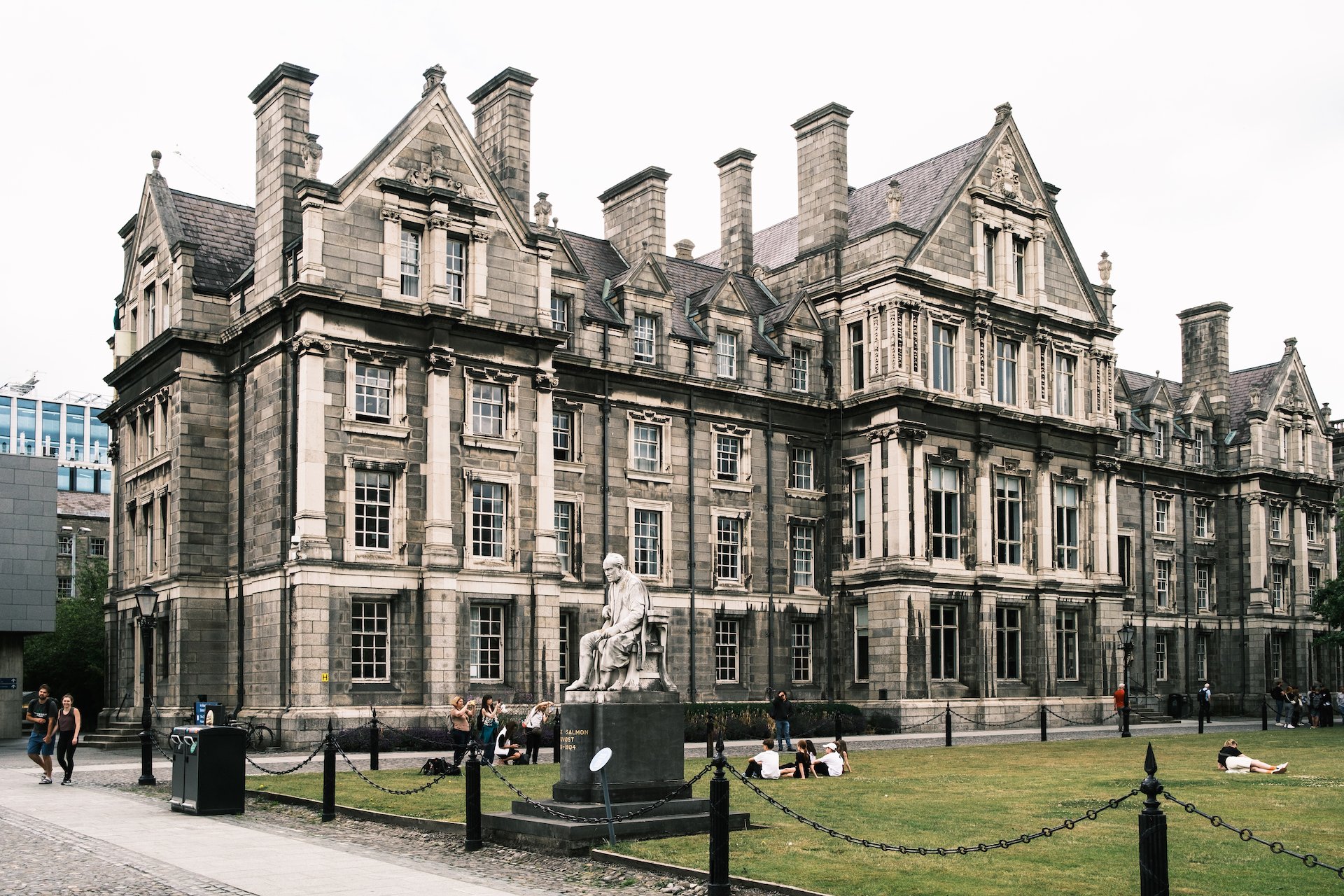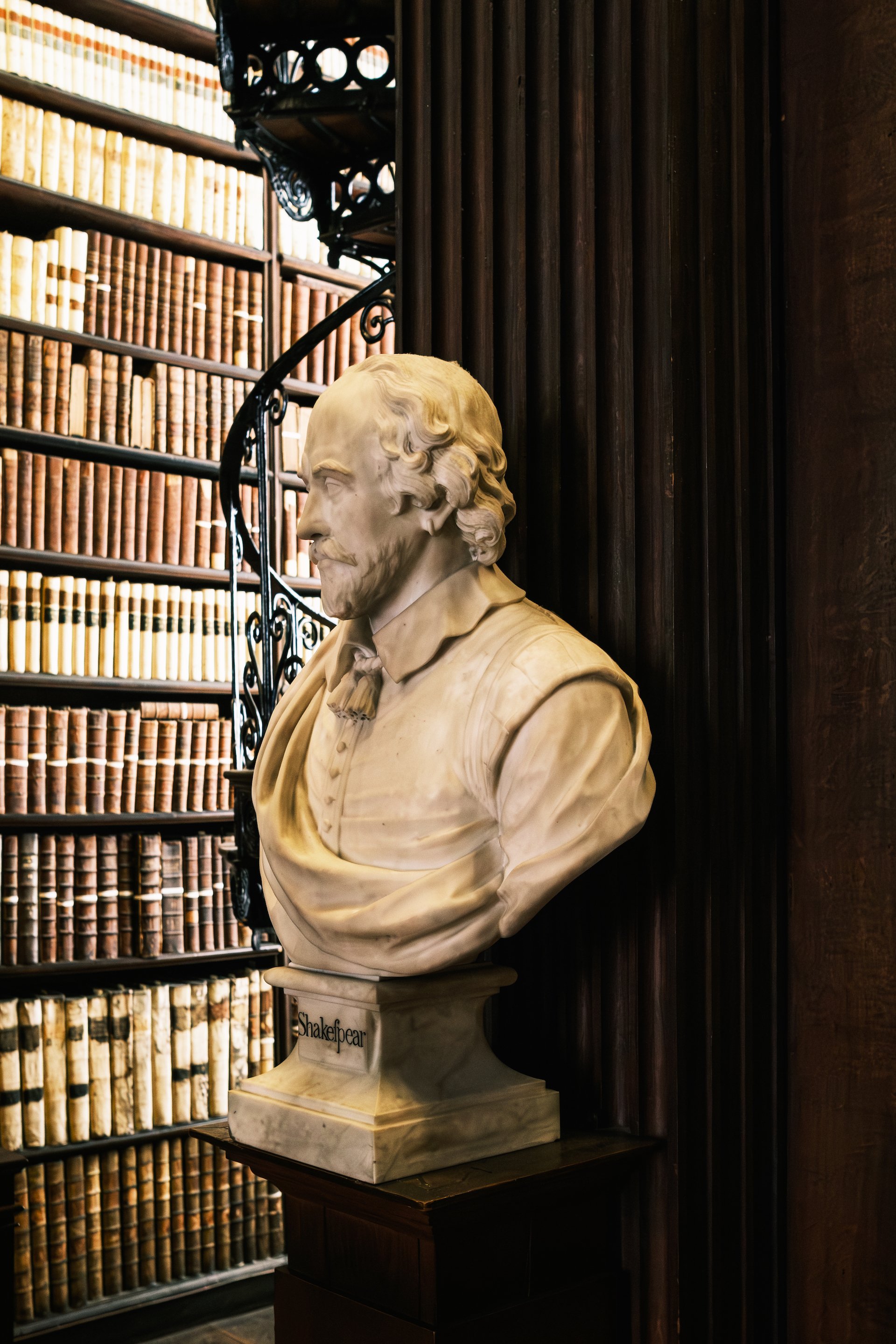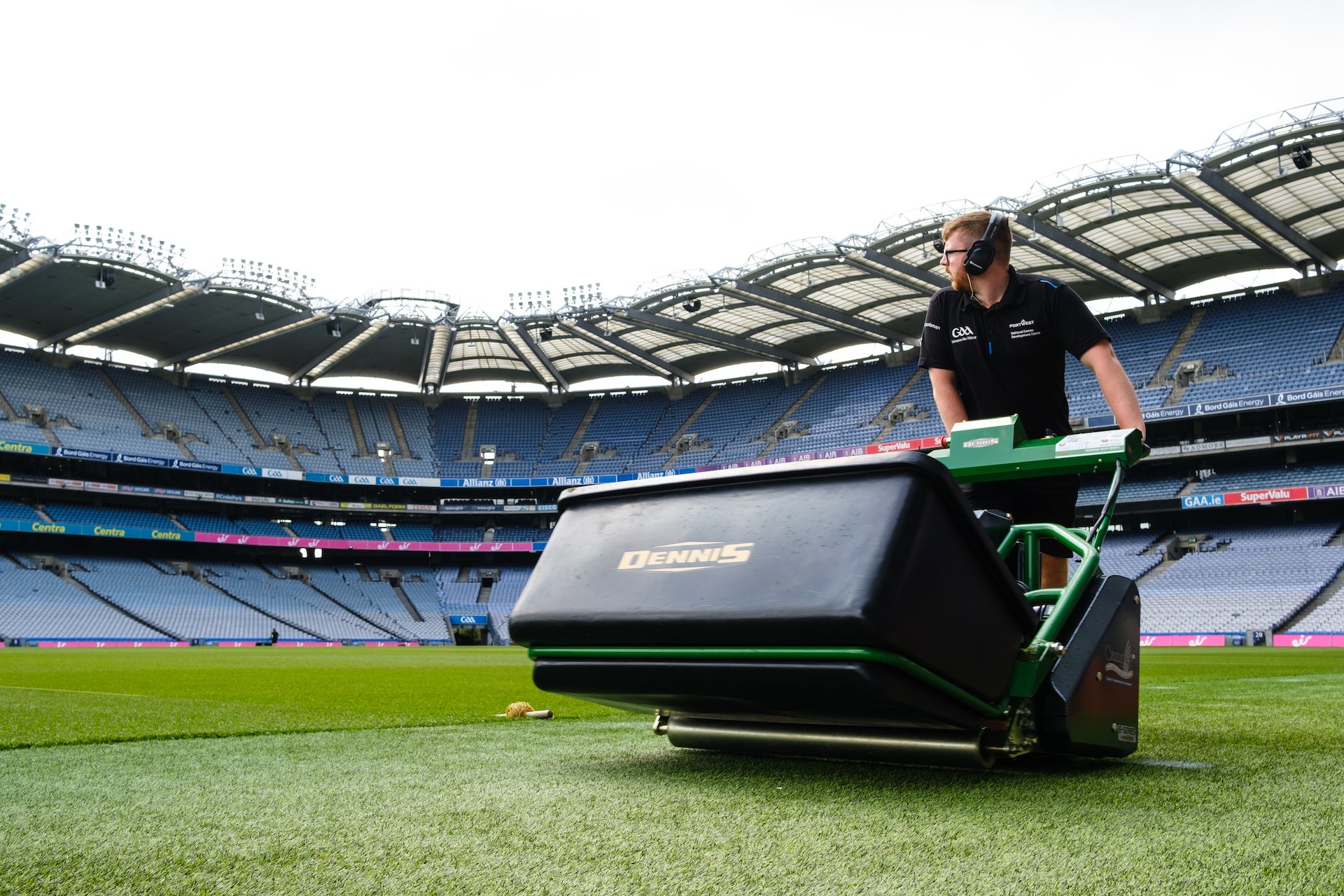Dublin: Weltstadt im Dorfformat
„The Celtic name for Dublin is Baile Áth Cliath. It literally means ‘town of the ford of the hurdles’ – and for a simple explanation: It’s the town at the point that you can cross the river. “
Ein Irland-Besuch wird wahrscheinlich in Dublin beginnen.
Die „Weltstadt im Dorfformat“, wie Dublin im DuMont-Irland-Reiseführer* heißt, begeistert mit seiner bis ins 9. Jahrhundert zurückreichenden Geschichte, mit einem reichen, kulturellen Angebot, mit spannenden Museen – wie das EPIC-Museum, wo man interaktiv durch Irlands bewegte Auswanderungsgeschichte geführt wird oder das „Little Museum of Dublin“, in dem in einem gregorianischen Stadthaus aus dem 18. Jahrhundert Dublins Stadtgeschichte erlebbar wird.
Zudem kann Dublin mit einer exzellenten, kulinarischen Szene sowie einer hohen Pub-Dichte punkten, in denen man Live-Musik und irische Gastfreundschaft erleben kann.
Werbung: Dieser Beitrag und die dazugehörigen Podcastfolgen sind mit der freundlichen Unterstützung von „Tourism Ireland“ entstanden – dafür herzlichen Dank!
In Dublin habe ich den Stadt-Guide John O’Hara getroffen.
John O’Hara
Der gebürtige Dubliner zeigt Besuchern seine Heimatstadt.
Ob Geschichte, Kultur, Sport oder Kulimarik – John kennt sich mit allen Aspekten der irischen Hauptstadt aus.
Stadtgeschichte & Entwicklung von Dublin
Die frühe Besiedlung der Gegend um die Mündung des Flusses Liffey herum, wo Dublin heute liegt, fand in der Bronzezeit statt. Die Stadt selbst wurde von den Wikingern im 9. Jahrhundert gegründet und trug damals den Namen "Dubh Linn," was so viel wie "Schwarzer Teich" bedeutet.
Im 12. Jahrhundert eroberten die Normanen Dublin und errichteten eine Festung, die als „Dublin Castle“ bekannt wurde. Dublin wurde zu einem wichtigen Handelszentrum und blühte im Mittelalter auf.
Neben den Wikingern und Normannen haben aber auch die Kelten, auf die ein Großteil der irischen Kultur zurückzuführen ist, ihre Spuren hinterlassen.
John O’Hara erklärt: “The Celtic name for Dublin is Baile Áth Cliath. It literally means ‘town of the ford of the hurdles’ – and for a simple explanation: It's the town at the point that you can cross the river. So you have the river. 2000 years ago would have been much wider. Their trade, the problem was trying to get from one side of the river to the other, on one side of Ireland to the other. They eventually found a point in Dublin early explorers, and they created a town Baile. And then Áth at the fording point, at the point that you could cross the river. Now, for a visual reference, if you want to look up at just a visual reference of the all clear on Google, you'd probably find a representation of this. It looks like a small bridge of decking on the bottom of the river. The river is tidal, so it's very high across very low and once very low you can see the bottom. And they would have pulled a bridge or decking so that people could somehow ford or cross the river. So the old name for Dublin is all clear. That's the old Celtic name."
Aber wer waren die Sagen umwogenden Kelten? Darüber ranken sich Legenden, wie John O’Hara weiter ausführt.
John O’Hara: “Who are the Celts? Nobody knows. Lots of academic talk and discussion about this the most. But the story I understand is that they are quite likely to have been displaced people from the Roman Empire, emigrants to this country that came here either for for Fresh Start or were displaced by the Roman Empire and came here and with their knowledge of Irish, their knowledge of weaponry and their cohesion, were able to form some kind of what we describe as a Celtic society or Celtic societies and give us that identity. But there's much academia discussion about that, what there is not as an invasion. We were invaded by the cats. Now they just migrated here over probably many centuries.
Our history is probably the history of invasions. So the next prominent people are the Vikings. So the Vikings in the ninth century arrived here and they left their mark. Then in the 12th century, the Normans. And that's a very big invasion. That's a very important that Dublin is often described in the guidebooks as a medieval style city. It was medieval orange, that's the Normans and that's 12th century. The Normans will eventually evolve into the English. So the English have not been here for seven or 800 years. The English have just evolved from the Normans who invaded here. And I could talk about that later on. So those are the different areas, kind of old Caltech, Viking, Norman English. And as we walked through Dublin, those are the areas that I will refer to as well.“
Im 16. Jahrhundert wurde Irland von England annektiert und Dublin wurde zum Verwaltungszentrum. Während dieser Zeit erlebte die Stadt ein stetiges Wachstum und wurde zu einem wichtigen Handelshafen.
Trinity College und das “Book of Kells”
Außerdem wird die Stadt zu einem bedeutenden Bildungsstandort mit der Gründung des Trinity College durch Queen Elisbeth I im Jahr 1592.
Damals gedacht als protestantisches Bollwerk gegen die Katholiken.
Inmitten des wuseligen Zentrums von Dublin ist der Campus von Irlands ältester Universität eine Ruhe-Oase.
Eine besondere Attraktion ist das „Book of Kells“, das in der Bibliothek ausgestellt ist. Es enthält die lateinischen Texte der vier Evangelien und wurde um das Jahr 800 im schottischen Kloster Iona erstellt.
Das Jahrhunderte alte Buch wird mit größter Vorsicht behandelt, wie James, der Guide der Trinity-College-Tour, der sich John O’Hara und ich angeschlossen haben, erklärt.
James: “The page is on display for years. That is how often they change the pages of this book. The whole place gets shut down just to change the page. I don't think any human hand has touched it in about a decade or so. People, skin cells and oil to destroy the pages. So especially those pampered book of the world. But it's essentially become a Bible. And the short story is it began its life over in Scotland in a place called Iona. It came here to Ireland to get away from Vikings. That's how it ended up in Kells. That's where the name comes from. And then Trinity got their hands on it back when Oliver Cromwell was on the rampage around them. And they gave it to the college for safekeeping in the 1640.”
Im 20. Jahrhundert gab es eine starke Unabhängigkeitsbewegung in Irland gegenüber England, die schließlich zur Gründung des Irischen Freistaats im Jahr 1922 führte, aus dem 1937 die Republik Irland hervorging.
Dublin wurde die Hauptstadt des unabhängigen Irlands.
Seitdem hat sich Dublin zu einer blühenden Metropole entwickelt. Die Stadt hat in den letzten Jahrzehnten ein beeindruckendes wirtschaftliches Wachstum erlebt und ist heute ein wichtiges Zentrum für Technologie, Finanzen und Kultur. Bemerkenswert: Rund 35 % der knapp 600.000 Einwohner sind unter 35 Jahren.
Was macht Dublin so attraktiv?
Doch was macht Dublin so attraktiv aus der Sicht von jemanden, der hier sein ganzes Leben verbracht hat, möchte ich von John O’Hara wissen.
John O’Hara: “Well, the first practical thing is that the weather is not one of extremes so that you can visit at any time and you don't have to you you don't have to worry about the winter weather. It's very cold or whatnot. You can you can come for tours here, you know, Christmas Day to are on the 26th. I mean that the city is not snowed in or anything like that. So that's the first thing. It's accessible, accessible to a person within Europe. It bridges several cultures. So there's Irish culture. There is English culture which has had a huge influence and there is American culture as well.
And so in terms of political stuff, you know, sometimes we have a question when we just describe economics, people say we cannot decide whether we're closer to Boston or Berlin as well, but kind of as a bridging point between kind of cultures as as well. I think it's very good for that. At a practical level, it's big enough to walk around and see a lot, and it's small enough not to get lost in. So some cities that I visited, you can see the center, but when you want to see other stuff, you've got to get on a bus, you've got to travel quite a bit. But actually everything you know, that you would see in Dublin in a day or two is all very walkable. So that's everything from the government apartments to the commercial areas to the old medieval areas, Viking areas, all of us and walkable in a day. And you can, you can walk around and discover and then go beyond that if you want.
Also, it gives you access to Ireland. And so Ireland itself, you can travel around and you know, Kilkenny, which is a center in the city, a city in the center is a city in the center of Ireland is 2 hours away. Glendale Park is an hour and a half away. Galway itself is about two and a half hours away by bus, so it's accessible. It gives you access to other parts of Ireland. In terms of the spirit of the city, um, I think Irish people are very welcoming, very friendly to that. I think people have an innate consciousness about tourism, about, for want of a simpler phrase, economic power of foreign people coming here, whether they be Americans or Europeans as well. So there I think people understand that tourism as a as a big thing also as well. It's a very simple thing. And so we often have a reputation for it, which is just the drinking culture as well. I've heard I've heard criticisms of other of other nations from from friends of mine, and they will say, and I won't name them, but I'll say, you just can't hang out.
You know, you just can't go out drinking and chill out with them as well. You can do plenty of that in Ireland in terms of music and drinking and relaxation. As to the broad spirit mean there's a Dublin spirit. As an Irish spirit, I still haven't figured out why what people why people like I don't like that as well. The only thing I can go by is an Italian friend of mine telling me that there's just this crazy spirit here that he's never witnessed or or met before, and that and he he he could not even define it, but he knew it when he saw us. And so those are just a few of my ideas about what it is about Dublin and Ireland itself, you know, So great.”
Dublin: Heimat von Weltklasse-Literaten
Nicht zu vergessen auch Dublins Bedeutung als kulturelles Zentrum von Irland. Allen voran die Literatur. Dublin hat eine reiche literarische Tradition und ist eng mit berühmten Schriftstellern wie James Joyce, W.B. Yeats, Samuel Beckett oder Oscar Wilde verbunden.
James Joyce
James Joyce war ein irischer Schriftsteller (1882 bis 1941). Er gilt als einer der bedeutendsten und einflussreichsten Schriftsteller des 20. Jahrhunderts.
Joyce war bekannt für seine innovativen Erzähltechniken und seinen experimentellen Stil. Eines seiner bekanntesten Werke ist der Roman "Ulysses"*, der als eines der wichtigsten Werke der modernistischen Literatur gilt. "Ulysses" erzählt die Geschichte eines einzigen Tages im Leben dreier Hauptfiguren in Dublin, Irland, und ist bekannt für seine komplexe Struktur, seinen reichen Symbolismus und seine sprachliche Vielfalt.
Ein weiteres bekanntes Werk von Joyce ist "A Portrait of the Artist as a Young Man"*, das autobiografische Elemente enthält und die Entwicklung eines jungen Mannes namens Stephen Dedalus verfolgt.
Joyces Einfluss auf die Literaturgeschichte liegt nicht nur in seinem innovativen Sprachgebrauch, sondern auch in seiner Fähigkeit, die Tiefen der menschlichen Psyche zu erforschen. Seine Werke haben die Literatur des 20. Jahrhunderts nachhaltig geprägt und beeinflusst, insbesondere in Bezug auf die Darstellung des menschlichen Bewusstseins und die experimentelle Erzähltechnik.
Auf die Spuren der großen Wortkünstler kann man sich bei einem literarischen Pub-Crawl machen.
Anhand von relevanten Orten der Werke und des Lebens der Schriftsteller, gibt es auch jede Menge Anekdoten – allen voran über James Joyce und sein bekanntestes Werk Ulysses*, in dem auf knapp 1000 Seiten der wohl längste Tag der Literaturgeschichte beschrieben wird. Der Protagonist Leopold Bloom streift darin durch Dublin – und nicht zuletzt auch durch seine unzähligen Pubs.
Aber hören wir mal bei Finbar rein – einem Schauspieler, der das Theater von der Bühne auf die Straßen und in die Pubs von Dublin bringt.
Finbar: “In Dublin in 2023, there are nearly 800 pubs in the city. And in Ulysses, James Joyce creates an infamous puzzle for Liverpool Blue how to cross the city of Dublin without passing by a pub and solution is very clever. He doesn't pass any pub, he goes into every single bar, not he finds. And that would have been a trickier idea when Arthur Guinness opened his brewery at St James's Gate in 1759, at one point in the late sixties and into the early 1700s, there was at one stage nearly 4000 pubs in Dublin, and most of those were illegal drinking dens in the living rooms of people's private houses.
The word for those was shebeen. Shebeen is an Irish word. The Irish word. The ends of the I order, which we call the accent fodder is the word for long that elongates the word being of something is a literal one off something else. Excuse me. It's. It was a3d theater. So a Brooklyn, a little boy calling a little girl shebeen means a little joke. And that's where your alcohol would be served to you. You go into someone's house, sit in their armchair, in their living room, and they drop you out a little knob of alcohol in any container they had to have. Because at that stage you see the water in the drinking water was drawn from the levee, which was also more or less the sewage system. So it wasn't particularly healthy. It made people quite sick of the process of making alcohol, made it much safer to consume, or at least that's what we told ourselves.
And so women in particular took to brewing in the home and they got a good reputation, then opened their house, the neighborhood, and start to charge a price for their product. And they turned from a private house into a public house, which is had the turn of a pub with the job of being a publican came about. Sir, every day's a school day and this was on for several years. It was a wild and ungoverned trade.
Everybody was having a great time until the powers that be stepped in and they did what they always do. They legislated and the creation two concepts in quick succession. They created the idea of a license to sell alcohol, which you had to apply to them to receive, and they taxed alcohol for the first time about proper level of drunkenness in Ireland down to what we have today.”
Dublin ist eine Stadt, die sich ständig verändert und weiterentwickelt. Ihre lange Geschichte und kulturelle Vielfalt machen sie zu einem faszinierenden Ort, der Geschichte und Moderne auf beeindruckende Weise miteinander verbindet.
Hurling, Gaelic Football und Camogie
Obwohl Fußball in Irland auch sehr populär ist, gibt es darüber hinaus Sportarten wie Hurling, Gaelic Football und Camogie, die sehr erklärungsbedürftig sind.
Darüber hatte ich bereits in Galway mit dem Stadt-Guide Brian Nolan gesprochen.
Brian Nolan: “Well, when I lived in America, they used to play the World Series of baseball, but only the American played it. That was the size of the world. We played the World Series of Irish Gaelic football and Irish hurling. So football is a cross between soccer and basketball. You can kick the ball. You can catch it in your hand and bounce it off the ground. Kick it off your foot, whatever. It's played on a pitch. The field is 120 meters long, by 65 meters long, a wide, big field. And you have two goals at the end. A score under the bar in the goal – that's a goal, it's three points.
And if you kick the ball over the bar between the poles, it's one point. So a typical score would be four goals and 12 points to six goals and 20 points, you know, and you'd have to do the math to figure out who won, you know? And then in hurling, it's a different game. It's a cross between Lacrosse and hockey. But people here say it's a cross between hockey and murder. Because it's played at a terrible pace. 15 people each side very, very fast. A small, hard ball like a baseball. And a stick that's one meter long with a flat end on it. And you can hit the ball 70, 80 meters easily, one whack and the speed it's played at and the competition.
You can hit the other guys hurley, you can knock them over with your shoulder, it's full contact and sometimes you get a bang in the face. They wear helmets, but that's only recent. That's only for wusses, you know. But they wear helmets nowadays. But usually you end up with somebody with blood streaming off their hands or whatever. But it's incredibly powerful, fast game, so skillful and so exciting. So, Galway plays both football and hurling, as do Limerick, as does Cork and Dublin.
Very few other counties play both sports. They either play football or hurling. Rarely do they play both. So Galway is one of those counties that plays football and hurling, and we're good at both, probably better at hurling than football. But we haven't won a cup for about six years. We need to win something soon. Oh, by the way, there are male hurling and football games and female hurling and football games. The female hurling is now called Camogie. Camogie.
And our sports are all amateur. Nobody's paid money. So, you know, a team of 15 guys and three subs or whatever. Nobody's getting money for the game. They're playing for the county, they're playing for the glory and the fun and the adrenalin and. And. And the crack.”
Und genau die passende Geschichte zum Amateursport habe ich in Dublin eine passende Geschichte gehört – im legendären Croke Park.
Wer dort bei einer Stadionführung in eine der Kabinen kommt, hört vom Band die Stimme von Jack McCaffrey, einer der Stars des Gaelic Footballs. Er berichtet davon, was ihm der Sport bedeutet und wie er sich vor wichtigen Spielen im Croke Park fühlt:
“So my advice would be is work hard, but above all else, always enjoy yourself and you guys are paid for the effort. Open up and due to me kind of putting a bit too much pressure on and getting out of form after.”
Neben seiner Karriere als Top-Sportler arbeitet Jack McCaffrey als Kinderarzt in einem Krankenhaus.
Die Stadionführerin berichet, dass einmal eine Familie mit drei Kindern zu einem Finalspiel in den Croke Park kam. Das Team von Jack McCaffrey war ebenfalls beteiligt. Er selbst wurde zum “Mann des Spiels” gewählt. Zwei Tage später wurde eines der Kinder krank und die Eltern brachten es ins Krankenhaus – der behandelnde Arzt? Jack McCaffrey. Eben noch “Man of the Match”, wenige Stunden später wieder im Dienst. Als der kleine Patient den Mann sah, dem er von der Tribüne aus zugejubelt hatte, dauerte es mit der Genesung nicht mehr lange.
Der Croke Park im Stadtteil Drumcondra der irischen Hauptstadt Dublin ist das wichtigste Stadion und der Hauptsitz der Gaelic Athletic Association, der größten irischen Sportorganisation. Es ist gegenwärtig das größte Stadion in Irland, und das fünftgrößte in Europa, mit einem Fassungsvermögen von 82.300 Zuschauern.
Menschen lieben seit jeher Geschichten. Wir begreifen, erleben und ordnen unsere Welt mithilfe von Geschichten.
Die Methodik des Storytellings auf die Fotografie zu übertragen, ist heute ebenso relevant wie spannend.
Professionelle Fotografen, Regisseure oder Influencer bzw. Werbetreibende setzen die Storytelling-Techniken bereits erfolgreich ein.
In unserem Buch möchten diese Methodik für alle greifbarer machen. Jeder ist ein Geschichtenerzähler, auch Hobbyfotografen.
„Nicht was wir gelebt haben, ist das Leben, sondern das, was wir erinnern und wie wir es erinnern, um davon zu erzählen.“
Das könnte dich auch interessieren
*Bei einigen der Links auf dieser Website handelt es sich um sogenannte Affiliate-Links. Wenn du die verlinkten Produkte kaufst, nachdem du auf den Link geklickt hast, erhalte ich eine kleine Provision direkt vom Händler dafür. Du zahlst bei deinem Einkauf nicht mehr als sonst, hilfst mir aber dabei, den Podcast und diese Webseite für dich weiter zu betreiben. Herzlichen Dank für deine Unterstützung!













































